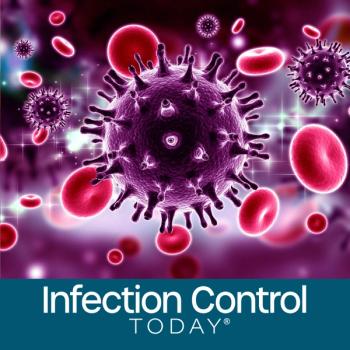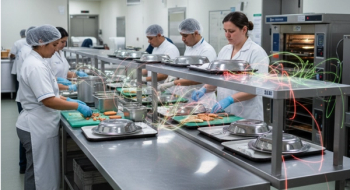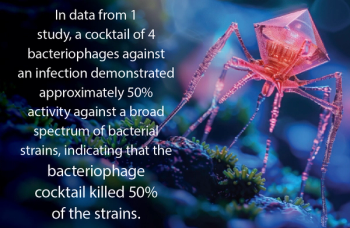
Commentary Says Triclosan Ban Shows Need for New Chemicals to Demonstrate Efficacy and Safety
A new commentary from Patrick McNamara and Stuart Levy cautions that the Food and Drug Administration (FDA)'s ban on triclosan and 18 other biocidal chemicals that promote antibiotic resistance is only a starting point. Triclosan's long-term impact, as well as the risks substitute chemicals may pose, must also be addressed.
The commentary is in the December 2016 issue of Antimicrobial Agents and Chemotherapy, published by the American Society for Microbiology.
Triclosan targets bacteria, encouraging its use in soaps and cosmetic agents. But bacteria adapt and become resistant to the chemical in a phenomenon known as cross-resistance. While the authors applaud the decision to remove triclosan from common products such as antibacterial hand soap, they note that the chemicals will continue to persist in the environment after the ban because they do not readily degrade. Moreover, triclosan is still used in some self-care products, including dry shampoo and toothpaste. As importantly, triclosan binds to soil and other organic materials used in agriculture, and its continued use delivers resistant microorganisms to the environment.
McNamara warns that "biocides will remain in the environment, perpetuating antibiotic resistance. Triclosan naturally resists degradation during wastewater treatment, making it pervasive in rivers, lakes, sediment and soil after it is sent down the drain. Specifically, triclosan binds to biosolids, which are organic matter recycled from sewage that is regularly used in agriculture. Along the way, triclosan selects for antibiotic resistance in the microorganisms that digest these biosolids."
The Food and Drug Administration's ban does not preclude the use of triclosan in toothpaste and other products, which will add to the development of more antibiotic-resistant bacteria in the environment.
Even though the ban is a hard fought victory for public health officials, the authors warn that companies may replace one biocidal chemical with another that has a risk as great as the original. Many of these substitutes, which have received less attention than the 19 banned chemicals, have been linked to cross-resistance to antibiotics.
"Triclosan has altered the bacteria in our environment and taken a lead role in selection and spread of these bacteria throughout the world, creating the environmental resistome--the ever-growing world of antibiotic resistance in our day-to-day environment. We can't undo this consequence of prior use. What we can do is work to encourage replacement of triclosan, but without contribution to further problems, namely, derivatives of the drug that can circumvent this ban," said Levy. "We can work to ensure that any replacements for triclosan do not contribute more environmental problems. Any chemical marketed as safe and effective should have to demonstrate these qualities before further worldwide damage is done."
Patrick J. McNamara, PhD, is assistant professor in the department of civil, construction and environmental engineering at Marquette University, and Stuart B. Levy, MD, is professor of medicine and director of the Center for Adaptation Genetics and Drug Resistance at Tufts University School of Medicine in Boston.
Reference: McNamara, P.J., Levy, S.B. Triclosan: an instructive tale. Antimicrobial Agents and Chemotherapy, December 2016. doi: 10.1128/AAC.02105-16
Source: Tufts University, Health Sciences Campus
Newsletter
Stay prepared and protected with Infection Control Today's newsletter, delivering essential updates, best practices, and expert insights for infection preventionists.






